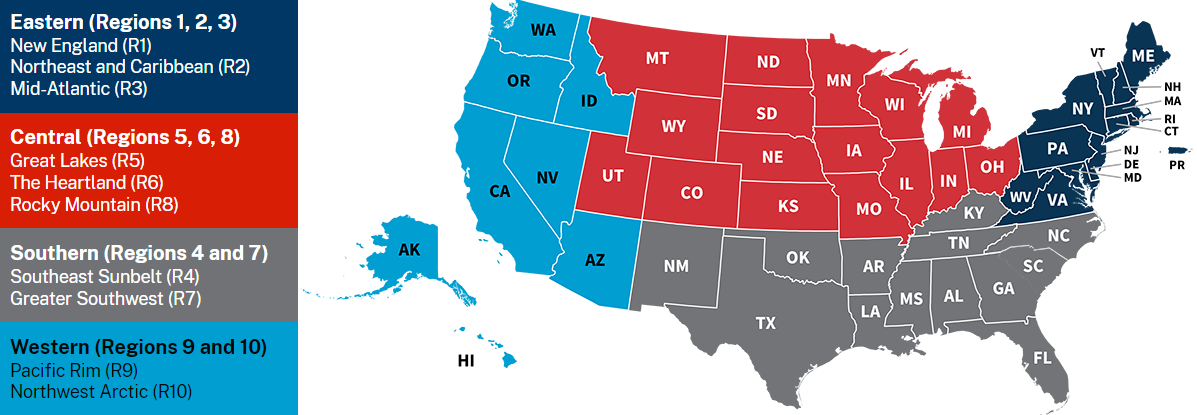Leadership scores rise in 2024 FEVS, but it depends where feds work
In 2024 FEVS results of senior leadership, there appears to be variation based on how closely situated employees are to their agency’s headquarters.
Of all the areas the Federal Employee Viewpoint Survey (FEVS) measures, federal employees’ views of senior leadership may be one of the trickier categories to unpack.
The “leaders lead” category on FEVS typically results in lower scores from federal employees than the category measuring views of immediate supervisors. But the senior leadership score for this year’s survey still increased from 61% to 63% between 2023 and 2024, the Office of Personnel Management reported last month. Looking back a bit further, employees’ views of senior leadership have risen 4% since 2022.
It’s certainly a positive finding in the governmentwide results of the 2024 FEVS, but looking more deeply at the survey results, there appears to be variation based on how closely situated employees are to their agency’s headquarters.
In a FEVS data dashboard, OPM’s breakdown of results by each Federal Executive Board (FEB) geographic region shows that federal employees located in the “Eastern” FEB — or those closer to many agency headquarters — have higher scores than those working in the areas covered by the Western FEB, who are for the most part geographically farther from headquarters.

For example, on the 2024 FEVS question of how well managers communicate the goals of the organization, employees located within the bounds of the Eastern FEB had 71% positive responses. Those in the Western FEB region scored 6% lower, with 65% positive responses. Employees located in the Southern and Central FEB regions both scored 67% on that same FEVS question.
The trends in the 2024 FEVS aren’t necessarily new. The Partnership for Public Service, in an August report based on 2023 FEVS analysis, found that field office employees scored nearly 10% lower than headquarters employees for how satisfied they feel with the recognition they get from their agencies. A recent report from the Government Accountability Office also found there is often a disconnect between agency headquarters and far-reaching areas of the country, such as Alaska, Hawaii and U.S. territories.
“Frontline workers frequently feel overlooked by their leadership. Oftentimes, these workers lack access to traditional communication channels, feedback mechanisms, clear opportunities for professional development or involvement in mission-critical strategic decisions,” the Partnership wrote in its report on the frontline federal workforce. “These limitations negatively impact employee engagement and can lead to long-term stagnation of the employee experience.”
Agency senior leaders should meet these federal employees where they are, for example, by sharing news or other updates through lines of communication that frontline staff already use regularly, the Partnership recommended.
“Leaders can begin by putting themselves in the shoes of their front-line workforce,” the Partnership wrote. “Who does that worker trust? When is that worker most likely to engage with the broader workplace system? What motivates that person to stay informed?”
Traci DiMartini, human capital officer at the IRS, said when she evaluates the FEVS results each year, she tries to look at the senior leadership scores in a broader context, by comparing them against attrition rates at an agency as well.
“There’s that adage that people don’t leave bad jobs, they leave bad bosses,” DiMartini said during an event last month hosted by GovExec. “I also think they leave unhealthy agencies that don’t have a forward-leaning, optimistic approach to training and development … That’s another metric we can look at and just see, how much turnover has there been in a particular office? And is it what I would call ‘good turnover,’ meaning people are leaving for promotions or new assignments? Or is it ‘bad turnover,’ where lots of people are just leaving and jumping ship, and they’re not staying very long?”
In another 2024 FEVS question, when asked if senior leaders generate high levels of motivation and commitment in the workforce, federal employees in the Eastern FEB region gave 55% positive responses. In comparison, those in the Southern FEB region gave 52% positive responses, while those in the Central and Western regions both had 49% positive results.
“Agency leaders, especially when interacting with frontline staff, must demonstrate how those employees’ everyday work contributes to the broader efforts of the organization,” the Partnership wrote. “Without explicitly outlining the connection between the strategy and implementation, frontline staff may perceive initiatives launched from headquarters as out of touch with their work.”
Getting leaders to make in-person visits to frontline staff is another way to demonstrate field staff’s value to the agency, the Partnership said. Additionally, the organization recommended that agencies incorporate feedback from frontline employees at the onset of planning or policymaking.
Leaders at the Transportation Security Administration, as an example, try to better connect with employees far from agency headquarters by making regular onsite visits. Jason Nelson, TSA’s chief human capital officer, told Federal News Network earlier this year that he travels to various airports across the country to talk to TSA staff in person, to try to make the message clear the agency is listening.
Michael Shonrock, director of OPM’s Federal Executive Institute, said one added challenge senior agency leaders face is trying to manage multiple generations of federal employees at once.
“I purposely interact with the different generations and ask them what they think could improve things, and how we can improve the things that we do. What I try to do is just weave all those things together, and then it becomes more of an inclusive discussion,” Shonrock said during the Oct. 24 GovExec event. “I think you just have to ask the questions, get to know the individuals. You’ve got to be visible and approachable as a senior leader, and you’ve got to ask questions.”
Building out and taking advantage of a leadership development program may be another way to improve senior leaders’ skills, and by extension, federal employees’ views of them.
“You learn early on in your career, especially in a leadership role, it’s not about you. It’s about your organization,” Shonrock said. “Helping folks understand that this going to be an investment, and it might be able to help advance the agency.”
Copyright © 2025 Federal News Network. All rights reserved. This website is not intended for users located within the European Economic Area.
Drew Friedman is a workforce, pay and benefits reporter for Federal News Network.
Follow @dfriedmanWFED






